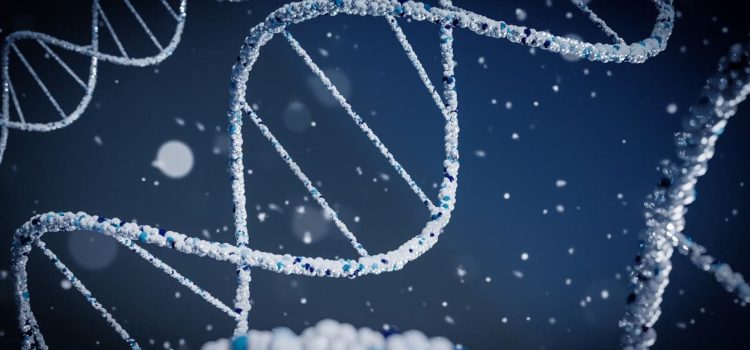
Are human bodies hardwired to break down as they age? What is planned obsolescence?
In his book Jellyfish Age Backwards, Nicklas Brendborg discusses two scientific theories that explain why humans age in the way that they do; one of those theories is planned obsolescence. Essentially, this theory states that aging is programmed into our genes.
Keep reading for a deeper look into this fascinating theory.
Aging as “Planned Obsolescence”
Brendborg says it’s possible that aging isn’t the result of random mutations. He discusses a theory called “planned obsolescence,” which holds that we’re genetically hardwired to age and die.
DNA Methylation Causes the Body to Break Down
What is planned obsolescence? This is the theory that aging is programmed into our genes emerged from the discovery of methylation: the process of molecules called methyl groups accumulating in DNA over time. These methyl groups attach to the epigenome—the parts of the DNA next to genes—and interfere with those genes’ functions.
(Shortform note: To better explain how methylation causes problems similar to mutations, let’s briefly discuss how DNA works. Your DNA contains numerous, relatively small segments called genes. Each of those genes contains instructions for creating a particular protein, which your body then uses for countless different functions. Methyl groups attaching to the DNA can cause those instructions to become garbled or prevent them from being “read” in the first place. Therefore, even though the DNA within each gene may be unchanged, the effect is the same as if it had mutated to produce a different protein or no protein at all.)
Notably, researchers have found that methylation follows predictable patterns across different tissue types and even among some different species. It’s much too consistent to be the result of random DNA damage, which is why Brendborg says humans may be genetically programmed to age: The consistency of the pattern suggests that DNA methylation is a natural part of our life cycle, just like growing from an infant to an adult.
This discovery led to the creation of a test called the epigenetic clock, which can estimate the age of an organism by measuring the degree of methylation in its DNA. Furthermore, studies have shown that people whose epigenetic age is higher than their chronological age—in other words, people whose DNA is more methylated than normal for their age—face increased risks of early death and age-related diseases. The reverse is also true: People with lower levels of methylation than normal tend to live longer, healthier lives.
| Does DNA Methylation Cause Aging? A great deal of research supports the idea that DNA methylation increases over time and can be used to estimate a person’s age and overall health. However, that doesn’t necessarily mean that DNA methylation causes aging—research suggests other factors have a bigger influence on the aging process. Additionally, as the saying goes, correlation is not causation: Just because two factors change in sync with each other, that doesn’t mean one change caused the other. For example, consider the fact that as the number of pirates in the world has decreased, Earth’s average temperature has increased. It would be ludicrous to say this pattern suggests global warming is caused by a lack of pirates. The pattern is a coincidence, and these changes are driven by entirely unrelated causes. Following that same logic, researchers must consider the possibility that additional factors cause both DNA methylation and age-related problems. It’s also possible (though very unlikely) that the entire pattern is a coincidence. |
Telomeres Limit the Body’s Ability to Heal
While Brendborg mostly focuses on DNA methylation, he also presents another piece of evidence that old age might be programmed into human genetics: Parts of DNA known as telomeres place inherent limits on the body’s ability to regenerate itself.
Telomeres are specialized structures at the ends of each chromosome (strand of DNA). They’re long strings of repetitive, meaningless DNA sequences that work like the plastic tips on shoelaces, holding the DNA together so it doesn’t unravel. They also act as a buffer, protecting the useful DNA in the genes from damage.
(Shortform note: Cell division, also known as mitosis, is a crucial biological process—it’s how your body grows and repairs itself. During mitosis, a cell makes an almost-complete copy of its DNA and then splits into two new cells, with each cell getting one set of DNA. However, the copying process isn’t perfect, and small pieces of DNA are lost with each division. That’s why telomeres are necessary: Instead of suffering damage to your actual genes during mitosis, you lose sections of the telomeres, which don’t contain important genetic instructions.)
Telomeres become slightly shorter each time a cell divides and eventually reach a critical length where the cell cannot safely divide again. Brendborg explains that a cell that can’t divide anymore enters a state called senescence, where it stops performing most of its intended functions, but doesn’t get destroyed by the body’s defense mechanisms like usual. Furthermore, senescent cells (informally called “zombie cells”) start releasing chemicals that damage the tissues around them, thereby causing the aches and pains associated with old age.
(Shortform note: It may seem strange that your own cells would release harmful chemicals into your body, but there’s a reason for it. In Ageless, biologist Andrew Steele explains that those chemicals are signals for your immune system to come and destroy the senescent cells—in other words, senescent cells attack the nearby tissues because they’re trying to force your body to defend itself. However, as we’ll discuss later, your immune system gets weaker as you age. Therefore, you eventually reach a point where your natural defenses can’t destroy all the senescent cells, so they start accumulating. This causes increasing pain and inflammation as you get older.)






